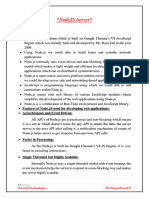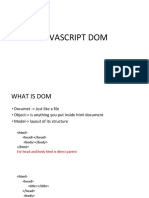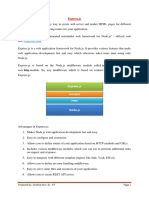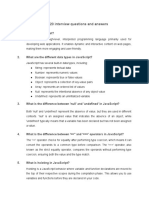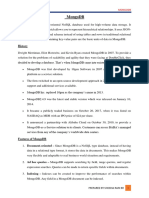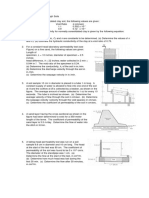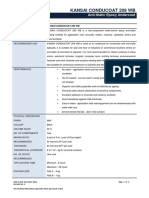100% found this document useful (1 vote)
387 views51 pagesNode Js
Node.js is a JavaScript runtime environment that allows building fast and scalable network applications. It was created by Ryan Dahl in 2009 and uses an event-driven, non-blocking I/O model that makes it lightweight and efficient. Some key features of Node.js include being asynchronous and event-driven, having a large ecosystem of open-source libraries, and being highly scalable due to its event-loop architecture. Node.js is commonly used for real-time applications that require two-way connections like chat, streaming, and IoT applications. It allows building web servers, networking tools, and distributed systems.
Uploaded by
makwanadeep369Copyright
© © All Rights Reserved
We take content rights seriously. If you suspect this is your content, claim it here.
Available Formats
Download as PDF, TXT or read online on Scribd
100% found this document useful (1 vote)
387 views51 pagesNode Js
Node.js is a JavaScript runtime environment that allows building fast and scalable network applications. It was created by Ryan Dahl in 2009 and uses an event-driven, non-blocking I/O model that makes it lightweight and efficient. Some key features of Node.js include being asynchronous and event-driven, having a large ecosystem of open-source libraries, and being highly scalable due to its event-loop architecture. Node.js is commonly used for real-time applications that require two-way connections like chat, streaming, and IoT applications. It allows building web servers, networking tools, and distributed systems.
Uploaded by
makwanadeep369Copyright
© © All Rights Reserved
We take content rights seriously. If you suspect this is your content, claim it here.
Available Formats
Download as PDF, TXT or read online on Scribd
/ 51
